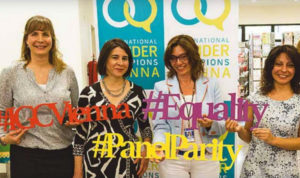May 31, 2018
Sarah Bidgood
The following is an excerpt from Newsroom (p 29).
The atmosphere at the 2017 Preparatory Committee (PrepCom) meeting for the Treaty on the Nonproliferation of Nuclear Weapons (NPT) was rightly described by some as “vanilla.” To paraphrase Dinah Washington, what a difference a year makes. The gloves came off in Geneva this month as delegates sparred over the future of the JCPOA, chemical weapons use in Syria, and prospects for a WMD Free Zone in the Middle East. One of the few positive elements of this otherwise dispiriting meeting was its focus on gender in nonproliferation and disarmament.

Women made up only 26.5% of delegates to the 2015 Review Conference, so in numbers alone, the 2018 PrepCom gave cause for modest optimism. Two side events focused on gender compared with none in 2017, and 108 statements were delivered by women compared with 80 last year. The draft chair’s factual summary endorsed the “equal, full, and effective participation” of women and men in nonproliferation and welcomed improvements over 2017 in this area. The broader multilateral disarmament community has seen some positive change, too. There is now gender parity among the top leadership of the United Nations, and the High Representative for Disarmament Affairs Ms. Izumi Nakamitsu is currently 37th on Fortune’s list of the top 50 World’s Greatest Leaders. This is measurable progress that is certainly worth celebrating.
Efforts to balance gender representation in our field, like avoiding manels and accrediting more women to national delegations, are important because they stop us from defaulting to men over qualified women. These approaches also make women experts more visible and train us to notice when they are absent. Learning what an equal gender breakdown looks and sounds like will help the nonproliferation and disarmament community overcome entrenched biases. Contributing to these efforts is the fact that we have become better at spotting inequity in our field and less tolerant of its manifestations. Alexandra Bell and Kelsey Davenport’s excellent piece on “marticles,” articles that quote only men, is an example of this phenomenon at work. Beyond calling out a discriminatory practice and explaining how to stop it, Bell and Davenport help readers understand how the status quo, when unchecked, perpetuates bias against women. Greater awareness of where gender intersects with power in our field will be crucial to making it more inclusive and balanced.
Continue reading at Newsroom (p 29).
